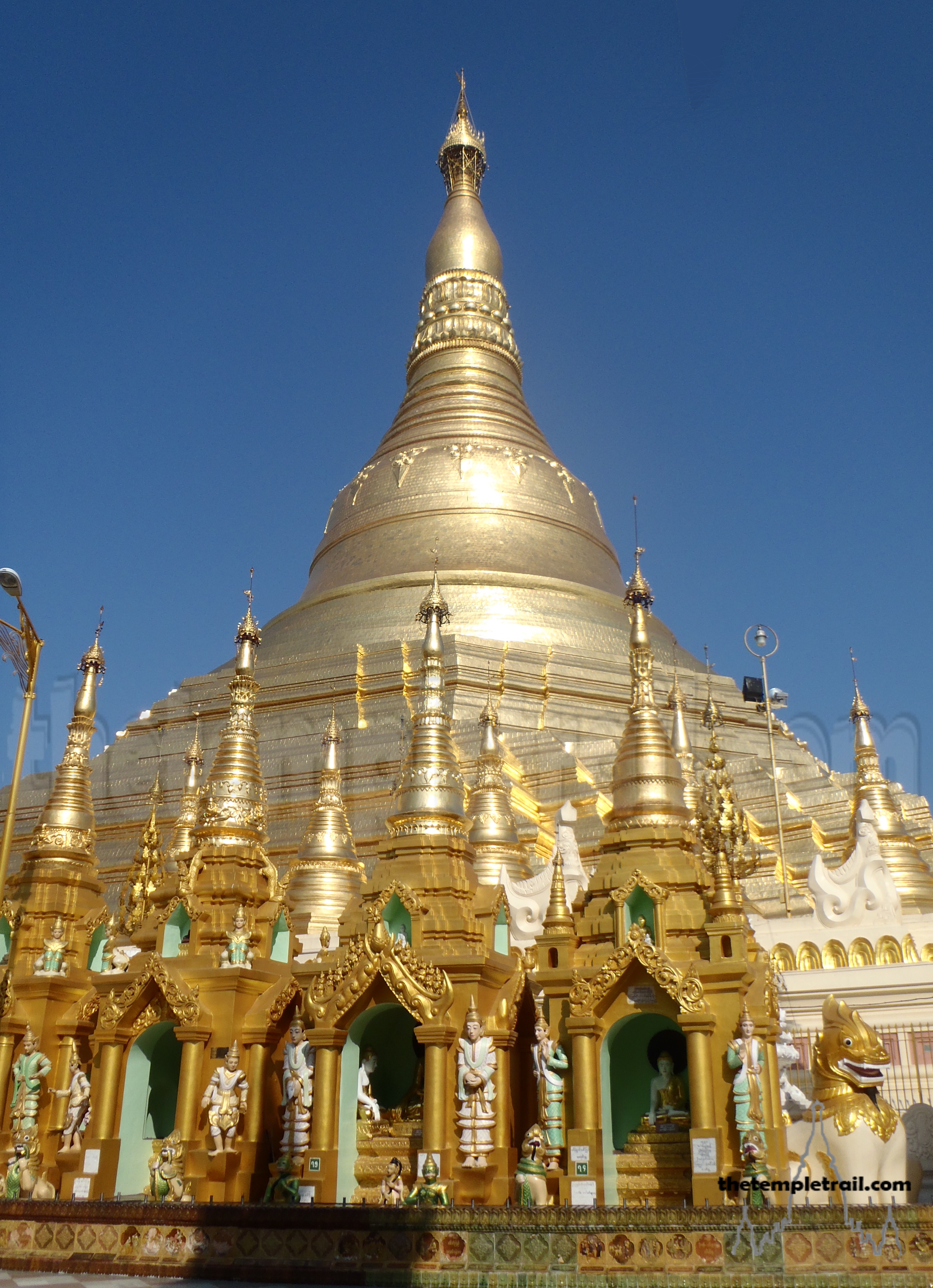The taxi drops you off in a car park next to a nondescript Kuala Lumpur overpass. All around you is a suburban wasteland of roads and minor industry. You could be in any city anywhere in the world if you face away from what you came to see. From the back of the car park you smell the aromatic wafts of curry coming from the dhosa stands. The aroma becomes increasingly intoxicating as you pass through and the urge to eat is almost impossible to suppress. You give in to your craving and stop at a stand to get a refueling before you face what is in front of you. It’s needed, as soon you will be expending a monumental amount of energy. After demolishing the crispy dhosa with its wonderful spicy vegetable filling, it’s time to push on. You head toward the object that has dominated your view since you arrived; a mammoth statue of Lord Murugan, the Hindu god of love and war. His statue is vast and it welcomes you to Batu Caves, a very holy place for the Hindu population of Malaysia.
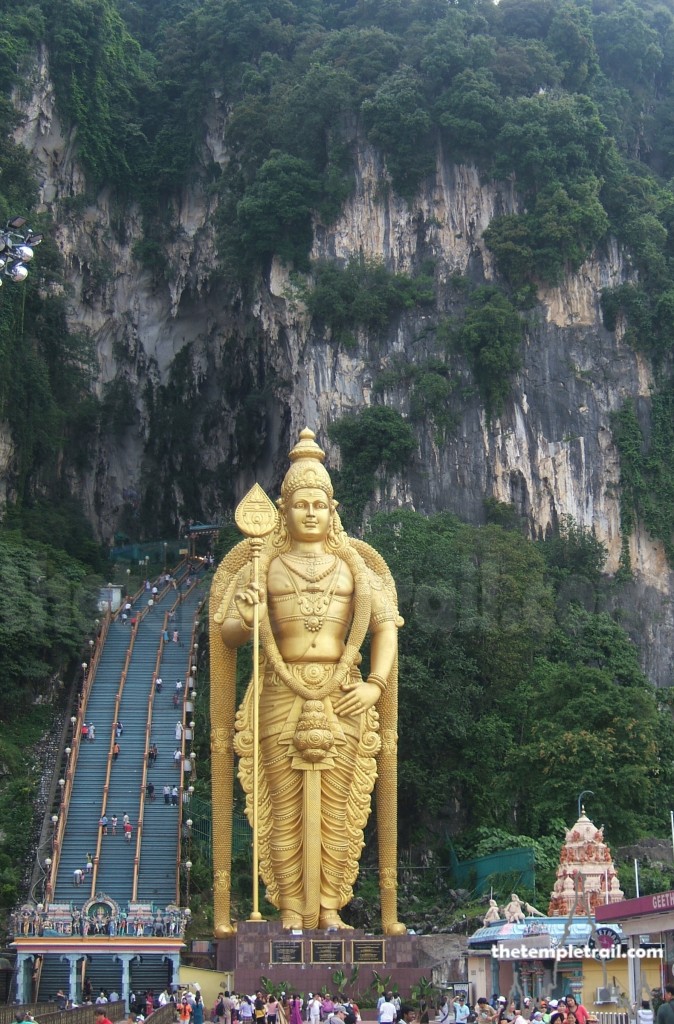
The statue was unveiled in 2006 and stands at almost 43 metres high. It is the second tallest Hindu statue in the world and took three years to build. Fifteen sculptors were sent from India to build what is one of the most impressive statues you will ever see.
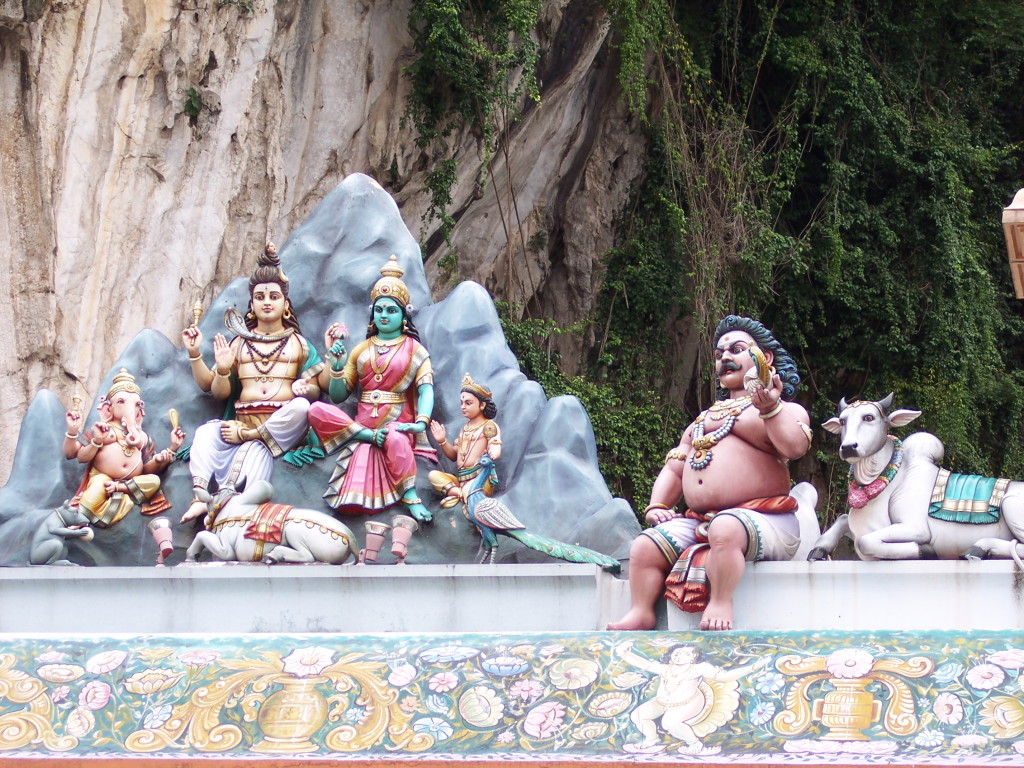
Also known as Kartikeya (among other names), Murugan is the second son of Śiva and Pārvatī and brother of Gaṇeśa. He is particularly revered by the Tamils of South India as a warrior and protector from evil. The divine spear he carries, called a vel, is often worn as an amulet by Tamil boys. The vel shaped cave opening was in fact the inspiration for the sanctifying of this place in the late 19th century by an Indian trader called K Thamboosamy Pillai. Pillai promoted the cave as special place for Lord Murugan and in 1890, he installed a statue in what is now known as Temple Cave. Within two years, it was a popular place of worship and the location of the Thaipusam festival every year. During this festival, adherents pierce their bodies with spikes and hooks that support large devotional structures in order to purify themselves through severe austerity and trance.
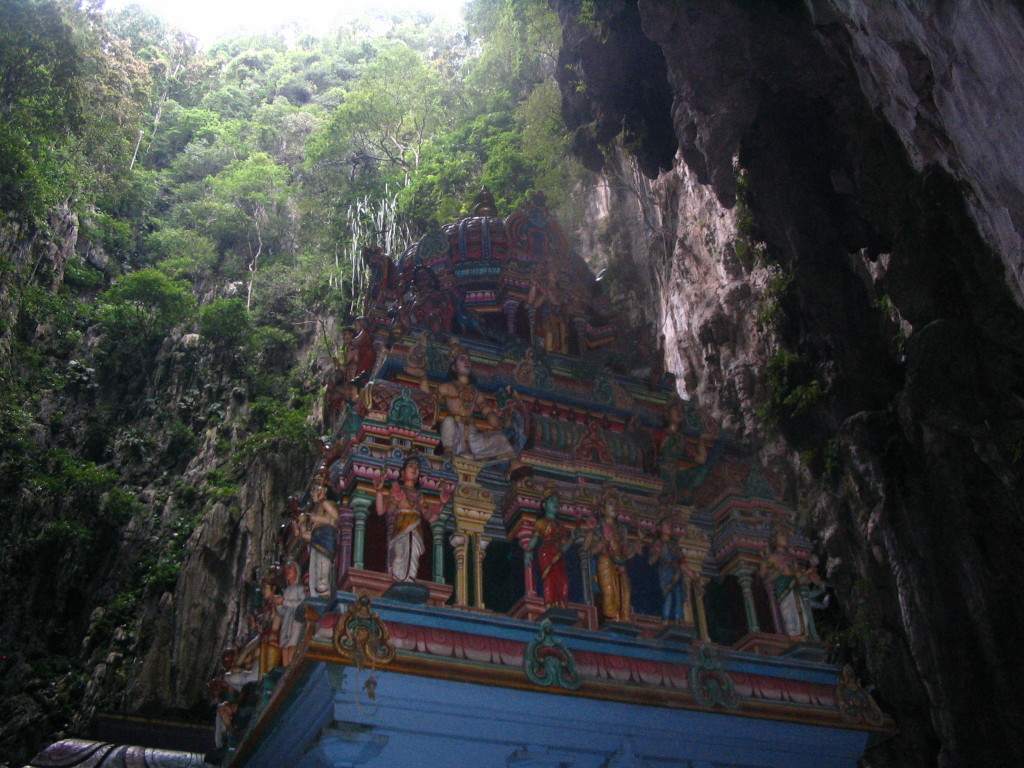
Next to his massive golden statue is a set of stairs that seem to climb the cliffside forever. The 272 steps take you 100 metres up the rock-face to Temple Cave. At the bottom of the steps are Gallery Cave and Museum Cave that contain shrines telling the story of Murugan’s victory over the demon Soorapadam. Halfway up the stairs is The Dark Cave. This one has been left to nature, featuring natural rock formations. It is the last home to the trapdoor spider of Malaysia. To the far left of the stairs is the Ramayana Cave that houses garishly lit statues illustrating the Ramayana story. At the entrance to the Ramayana Cave is a 15 metre tall statue of Hanuman, the monkey god.
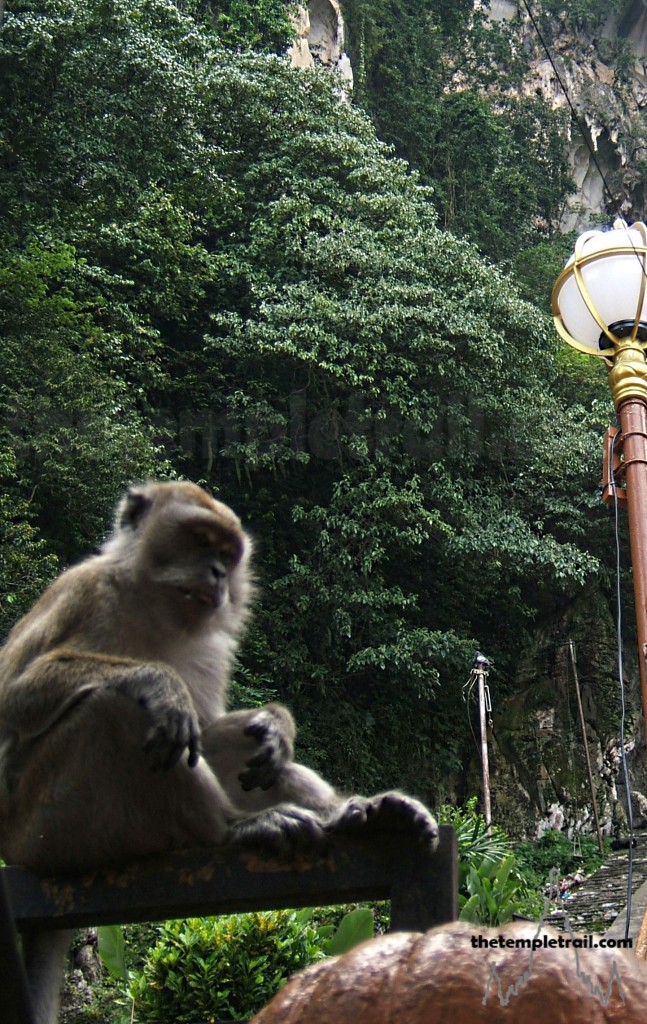
This is fitting, because as you near the stairs to Temple Cave, you see they are crawling with nimble macaque monkeys. These small, yet powerful creatures rule the caves. You pick your way up the steps, carefully avoiding the simian gangs, and congratulate yourself on eating that dhosa for the much needed energy. With burning thighs and sweat pouring from your body in the tropical Malay humidity, you finally arrive unscathed at the vel-shaped cave mouth.

Through the darkness, you see devotees at the numerous shrines within. Walking through the dim cavern, the fragrance of burning oil makes the air thick. You pass a table that acts as a makeshift home to an albino Burmese Python. Bare-chested and painted Brahmin tend to the worshippers needs at each of the shrines. Chants in various languages float through the air. As you come to the rear of the cave, the chamber opens out once more.
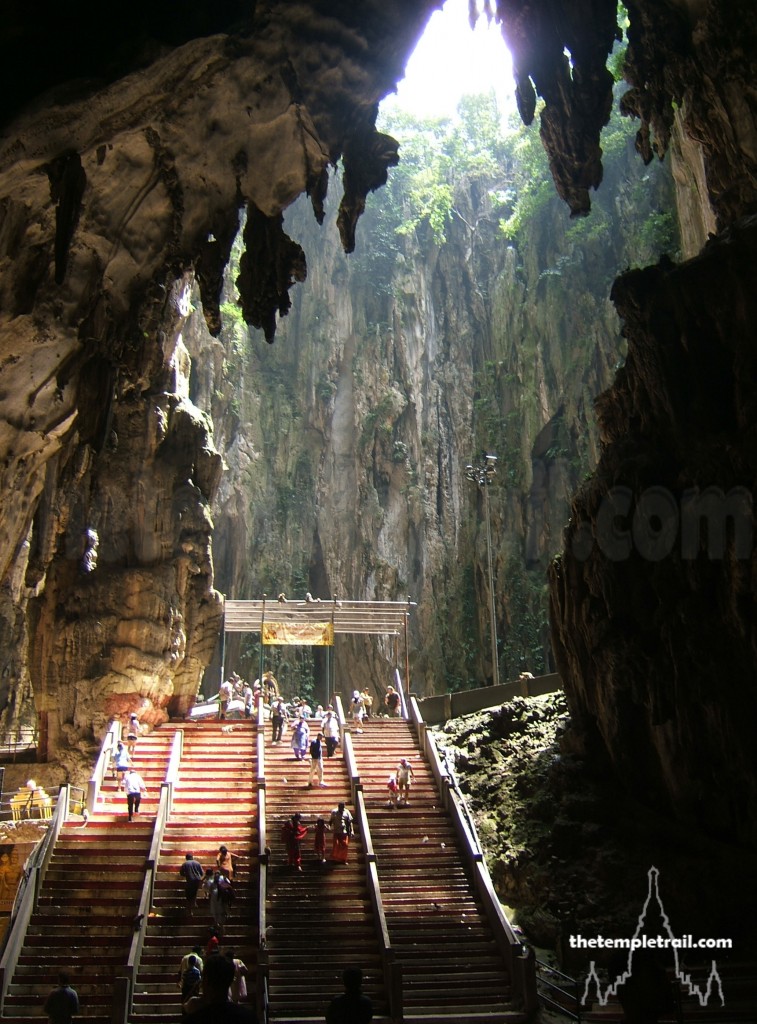
You climb up and out into a completely contained area that opens to the heavens. A few monkeys are relaxing in the sun’s rays, as some roosters peck around. When Pārvatī gave Murugan his vel to defeat the demon Soorapadam, he hurled it into a mango tree. The tree split in half and one side became a Seval (rooster) that he uses as the emblem on his battle flag. The other side became a Mayil (peacock) that he uses as a vahanam (vehicle or mount). Peacock sculptures can be seen on the corners of the roof of his shrine that sits in this area, open to the elements. A throng of his followers gather at his shrine to gain favour with him. Those who worship him believe that he can cure all ills with his bow and that his vel can protect them from danger. His peacock mount has the power to destroy the ego and bring you closer to enlightenment.
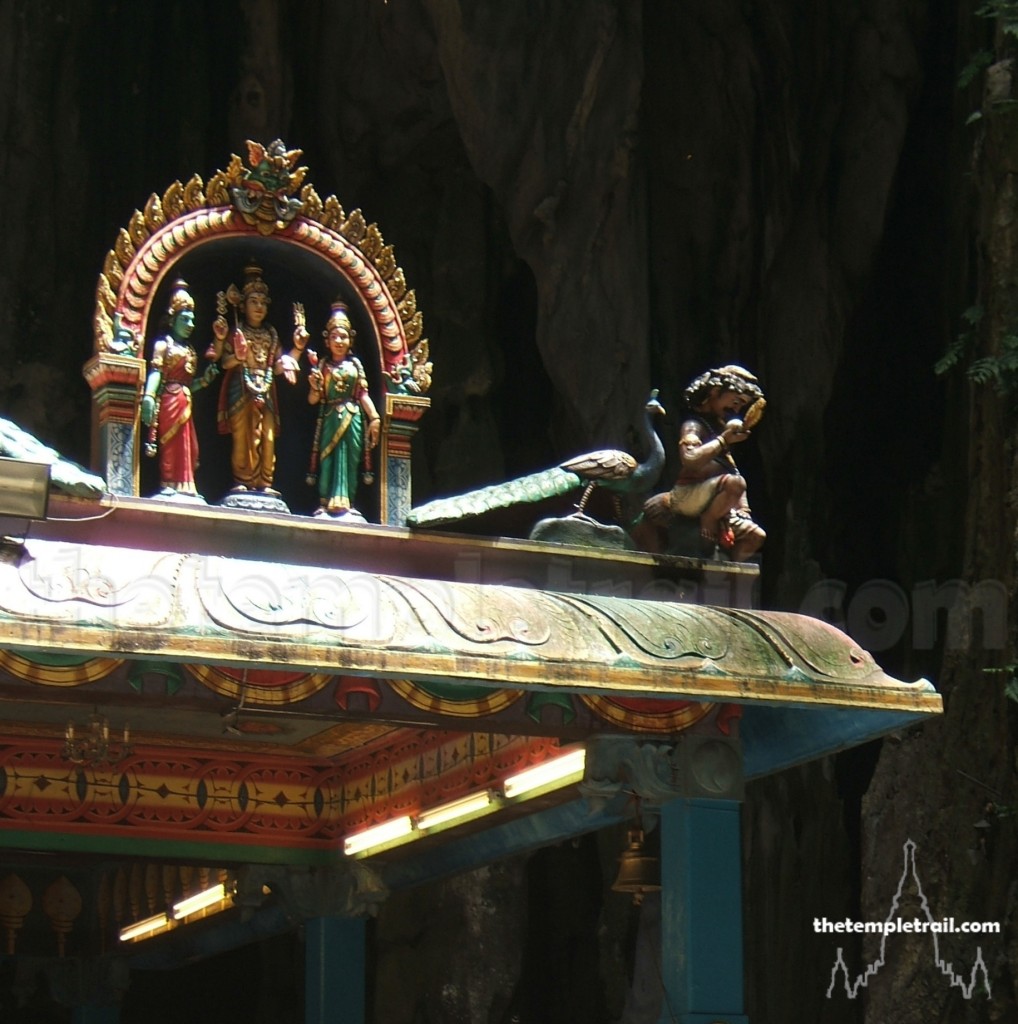
After enjoying the light and gaining blessings from Murugan, you head back into the darkness. Passing once more the shrines and Brahmin, you feel something primordial and ancient must live in these 400 million year old caves. The oil burners and strangely lit shrines give the cave a mystic aura that makes the air prickle with energy. The multilingual chanting, the painted devotees and Brahmin add to the mystery of Batu Caves. As you come back to the entrance, the light blinds you and you feel like you have been born anew and thrust out into the world.
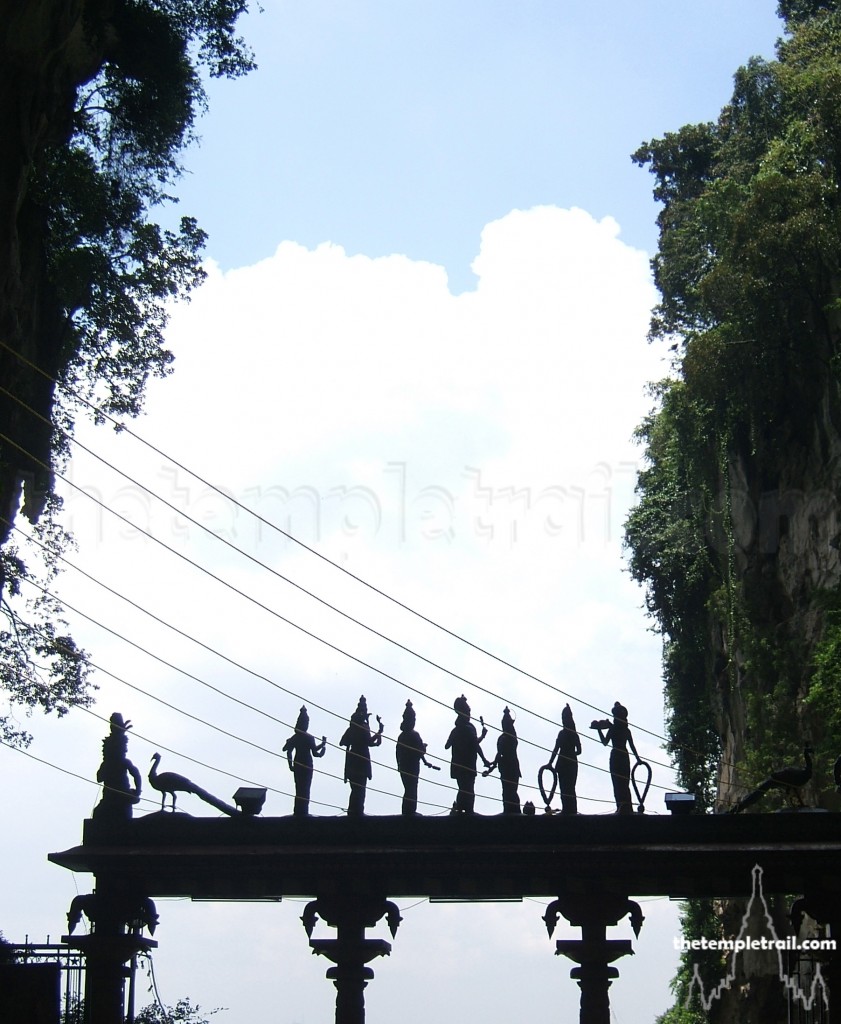
Making your way down the steps, a monkey bars your passage. He sits in your way and stares you down. Feeling a sudden gust of bravado you try to win the stand-off. Bearing his pointed teeth, the monkey shows you who’s boss and you decide that Murugan has not extended his protection to you regarding monkeys. They have a permanent aura of safety as it’s their home. The law of nature applies here; the monkey always wins.
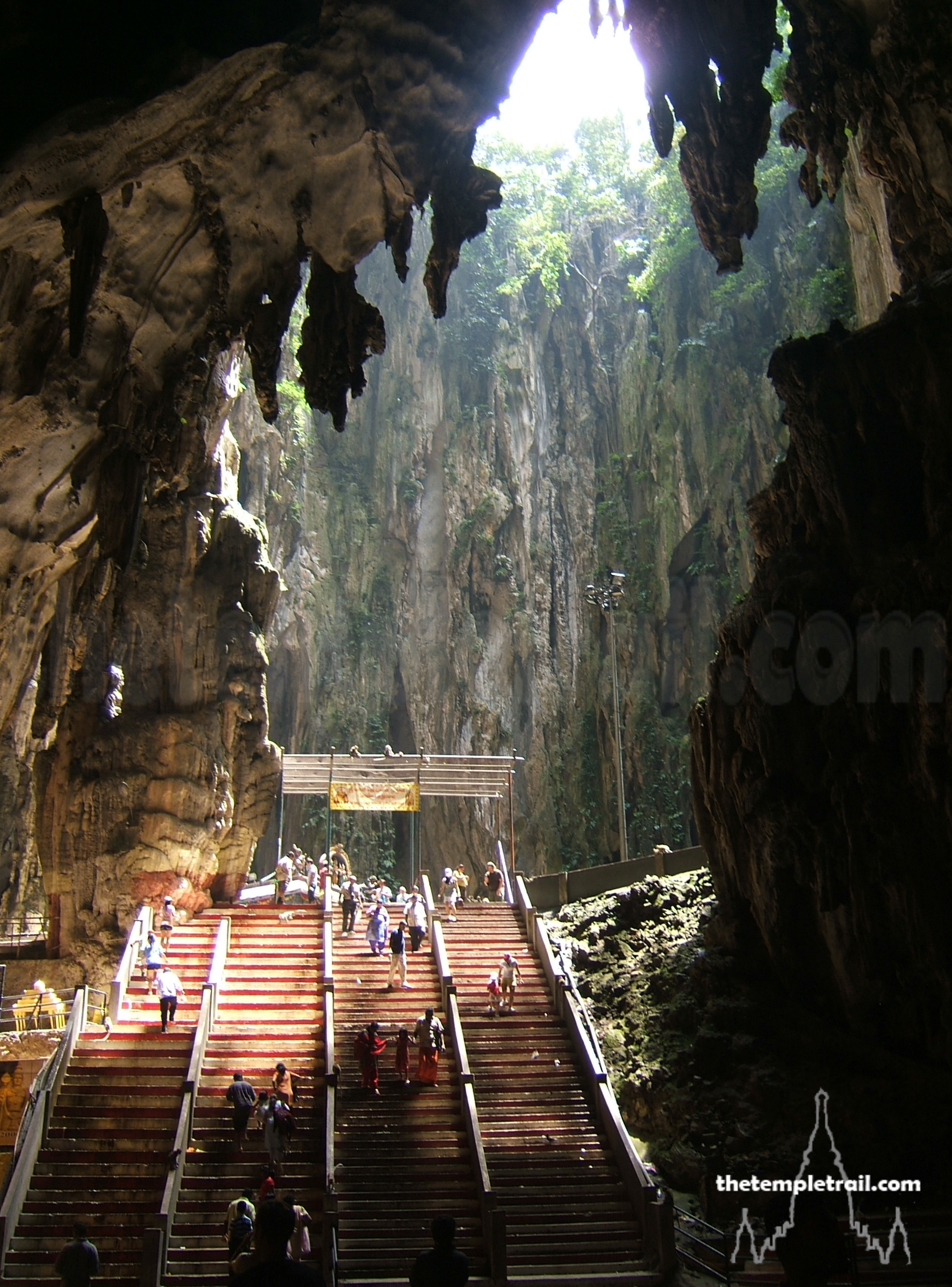
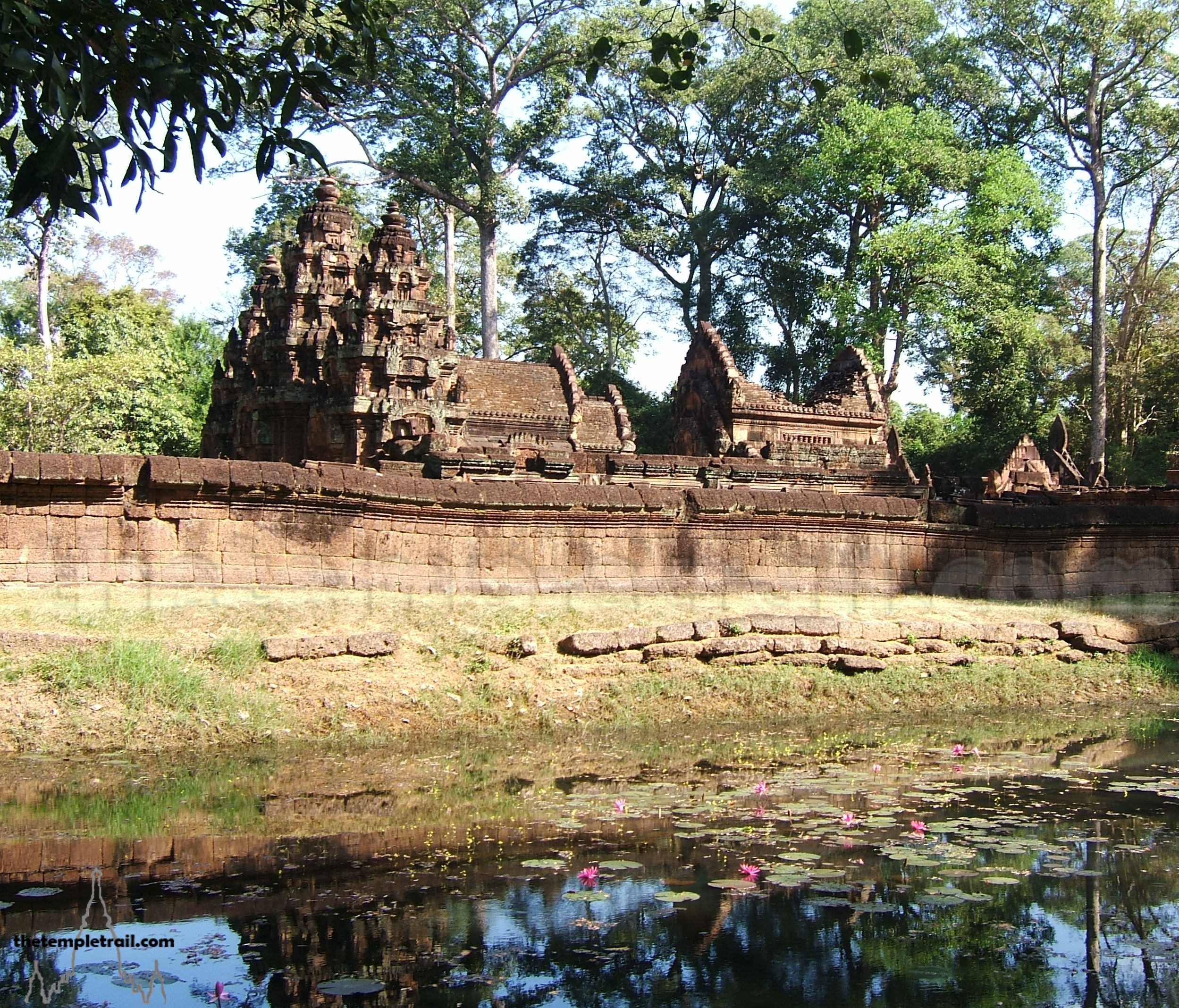 Banteay Srei
Banteay Srei